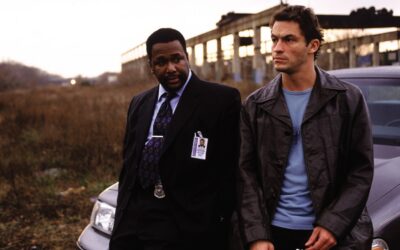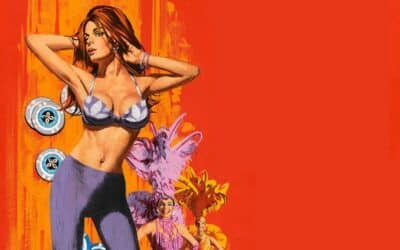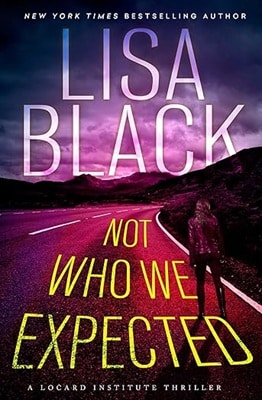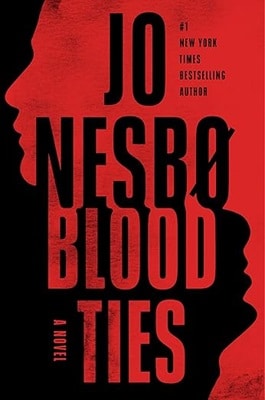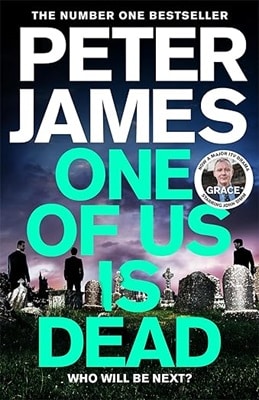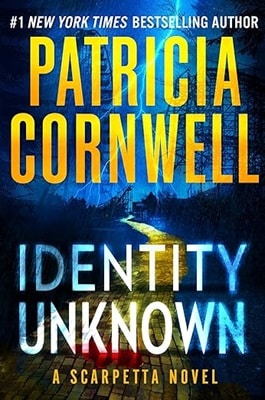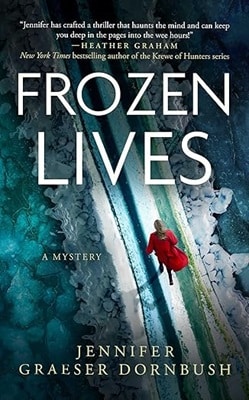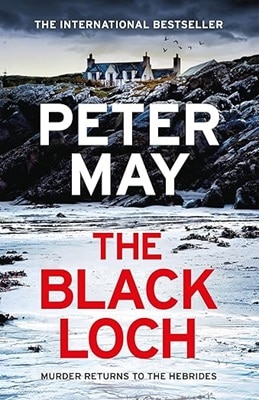
Feature
The Crime Fiction Novella
Moderated by William Burton McCormick
The crime novella is a conundrum. Elegant. Streamlined. Historically important. The form has produced a stream of masterworks down through the ages from Dostoevsky to Rex Stout to Megan Abbott.
Yet, most modern crime writers explore the novella only after establishing themselves in other forms, turning to it because of boredom, curiosity or even desperation or exhaustion. After twenty years in his words of “ultra-marathon” novel writing, Don Winslow recently thought it was time for the “middle-distance stuff” publishing a quintet of novellas in 2020. One of my own favorites, Alan Furst, toiled twelve years, releasing four unsuccessful novels, before fusing five unpublished historical spy novellas into the episodic novel Night Soldiers in 1988. It made his career. Even the great Graham Greene wrote for twenty years before drafting “The Third Man” simply as a reference for the film’s producers, the novella itself was never meant for publication.
By contrast, some horror and science fiction writers still make the novella the bulk of their output, even the lynchpin of careers. So why are crime and mystery writers hesitant to do more than dabble in this historically important and creatively pleasing form? To gain a greater perspective on these and other questions, we have assembled an international panel of crime fiction writers and editors and asked them a selection of novella-related questions. Our illustrious participants in alphabetical order are:
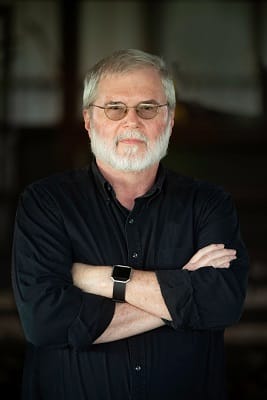
Michael Bracken (CrimeFictionWriter.com) is the co-creator and co-editor (with Trey R. Barker) of the novella anthology series Guns + Tacos (Down & Out Books), author of more than twelve hundred short stories and several novels, and is the Anthony Award-nominated editor of anthologies and Black Cat Mystery Magazine.

Martin Edwards (MartinEdwardsBooks.com) is the award-winning author of The Life of Crime and twenty novels, seventy short stories, and “The Traitor,” a novella in the Mysterious Bookshop Bibliomysteries series.

Christina Hoag (ChristinaHoag.com) is a novelist and former journalist who has written two novellas, “The Blood Room,” a police procedural, and “Law of the Jungle,” a psychological thriller releasing this month.

Linda Landrigan (AlfredHitchcockMysteryMagazine.com) has been the editor of Alfred Hitchcock’s Mystery Magazine since 2002. AHMM partners with The Wolfe Pack, the official appreciation society for Rex Stout’s Nero Wolfe series, for the Black Orchid Novella Award contest, which is now in its 16th year.

Steve Liskow (SteveLiskow.com) was the first two-time winner of the Black Orchid Novella Award, has been a finalist for the Edgar and Shamus Awards, has published sixteen novels, and conducts fiction-writing workshops throughout central Connecticut.

Christoffer Petersen (Christoffer-Petersen.com) is the author of over 30 novellas featuring police constables Petra “Piitalaat” Jensen and David Maratse from his popular Greenland crime series of novels.
We’ve given each participant the same selection of questions and asked them to respond to those of their choice. So, keeping in mind Raymond Chandler’s maxim to “say little and convey much,” let the discussion begin.
Specifically relating to mystery and crime fiction, what does the novella form allow a writer to do that a short story or novel can’t? Are there special methods or techniques you use when drafting a novella as opposed to works of other lengths?
BRACKEN: Successfully writing a novella requires more advance planning than writing a short story. I need to know that I have a story that merits the additional words and isn’t just a short story with added fluff.
EDWARDS: Some story concepts are best suited to short stories, while some need the much broader canvas of a full-length novel, so that their full potential can be exploited. An idea which works well for a novella is very often an idea for a story that develops over a number of scenes and perhaps a period of time, so is not as dependent on a single idea or twist or gimmick as a short story. But a novella idea will very often emerge in the form of a stand-alone storyline, with a limited number of key characters, and with no complementary sub-plot(s) of the kind that give added texture to many novels.
HOAG: For me, writing a short-story mystery is a tall order. There’s just not a lot of room to develop the plot in the short story, considering that it’s hard to place a story over 5,000 words. The novella gives that bit more rein to develop the plot and character, throw in a red herring or so and give a twist at the end.
LANDRIGAN: A novella is neither a padded short story nor just a short novel.
A short story is characterized by focus; it’s a microcosm of singular events, few characters, and small details that suggest rather than document a larger world. A short story requires concentration and careful reading. A novel, meanwhile, interweaves multiple elements—plots, settings, characters, digressions—into a rich fictional world that the reader can get blissfully lost in.
A novella can deploy only one or two of those novelistic elements, while keeping a taut rein on the others. For a crime and mystery fiction publication like ours, I generally see novellas offering the space for more complex plots. But like the short story, the dialogue on the page still needs to be brief and pithy, backstory limited to just what’s necessary to know to follow the plot, descriptions contained to just a few revealing details. The author needs to trust the reader to bring his or her own imagination to the story. I think it’s that cooperation between the author and the reader that makes reading so much fun, and that allows the reader to find for him/herself the insights in the reading experience.
LISKOW: The novella allows me to add texture, usually with a subplot that is a variation on the main theme of the story, which, for me, is usually a mystery. For example, in “Look What They’ve Done To My Song, Ma,” there’s the mystery about who wrote the songs, who killed the musician, and the issues of trust and how we treat people, whether they’re a band member, a lover, or someone else. Several people in this story are protecting someone else. The greater length also allows more room for atmosphere and scene setting. I hate static visual description, but a novella gives me room to work with other senses to convey a sense of space and enhance the mood. Think of the concert that opens “Stranglehold.” I wanted the reader to hear the music and vocals and feel the excitement of the band’s performance. My first two novellas both won the Black Orchid Novella Award, but my process was almost the exact opposite for the two of them. Since then, I have developed a more consistent “process,” and it’s pretty much the same as the way I write short stories now. Start with an idea, give yourself permission to write lots of crap, and fix it as you go along. Then, when you get to the end, go back and fine-tune it. That includes changing details so the ending works.
PETERSEN: The crime novella lends an intimacy to characterization encouraged by the shorter form, and further motivated by the expectations of the reader. There’s no time to explore the tropes associated with the divorced detective on a slow self-destructive cycle. The reader demands more, and the novella demands a focus on story with sparing prose to convey the detective or criminal’s mood and motivation. Not so sparing, however, as the short story. There is plenty of room for characterization in a novella. If done well, the reader can be caught up in a lyrical crime story without long passages of purple prose. There’s a mystery to be teased and resolved. The author must get cracking. One might think of the short story as the appetizer, the novel is the main course, while the novella is the dessert. And who doesn’t like dessert?
Do you set out to write a novella by design or does it emerge from an attempt at another form like a short story or novel? Is the process of writing a novella different than other forms?
BRACKEN: I’ve only written a handful of novellas, and most were planned as novellas because I was writing to specific editorial guidelines. The two that weren’t originally planned as novellas were part of a larger project that I never finished, and two of the completed sections of that project worked well as stand-alone novellas—one crime fiction, the other horror—and were published separately.
The process is not significantly different from other forms. Each requires the author to put one word after the other until finished.
EDWARDS: I have only recently been attracted to the idea of writing novellas, because of the previous unavailability of platforms for a novella, at least in the UK. One of the writers who has influenced me most in this area is Robert Aickman, who isn’t a crime writer at all, but an author of “strange stories”. I wrote a short story, rather than a novella, called “Through the Mist” which was influenced by Aickman, and that experience made me wonder about the potential of using a longer story to explore certain interesting situations in more depth than is possible in a short story. My first novella, “The Traitor”, arose from a commission by Otto Penzler of The Mysterious Press to write an entry in his series of Bibliomysteries. I came up quickly with an idea that needed room for development, even though it wasn’t an idea that would (without a sub-plot) sustain a novel. The idea of writing about books and book-lovers fired my imagination and I wrote the 15,000 word story quite quickly. I found that having the ability to develop a new protagonist in this way was appealing and I took the opportunity to use a variety of settings as well as to make use of information I’d gained when reading about the artists responsible for the cover artwork of British pulp fiction after the Second World War. So the process was similar to writing a novel, but the reduced length made it easier to write the story quickly and to maintain a degree of tension in the writing. The length also gave me the opportunity to touch on themes relevant to espionage fiction and the central story idea (about a book detective’s quest to find lost cover artwork), such as loyalty, trust, and betrayal.
HOAG: With both my novellas, I didn’t set out to write a novella specifically. I just started writing to see where the story went. That said, I knew they were ideas that would take a longer to develop than a short story, but I didn’t want to commit to a full-length novel. Hence, the novella emerged as an ideal in-between format. The great thing with novellas is that the length is so variable, and of course, you can combine two or three novellas to make a “collection” that totals a full-length novel.
LISKOW: My first novella started out as a short story that didn’t sell, and a writer friend told me he thought so many characters appeared early that it was hard to keep them straight. I knew I couldn’t cut any of them, so I thought the story would never sell. Then someone told me about the Black Orchid Novella Award and I wondered if it could stretch out. I added 9000 words to a short story in three days—mostly texture and depth in the existing scenes—which told me I really had a novella on my hands from the beginning and didn’t know it. The second one was going to be a novel, but I couldn’t find the subplots to relate to the rest of the story. I cut most of them and decided to turn it into a novella, and it worked better. Now, I try to create a crime or mystery and a few major characters, then see how each character has a different need or focus besides the main mystery. Those become the subplots and I try to weave them together. It’s kind of a compromise between the novels which I used to plan and outline extensively and the short stories which I don’t plan at all. In a short story, more often than not, I only have a vague idea of the ending until I get there. In a novella, my big problem is usually showing how the sleuth solves the mystery. That involves going back and changing or adding something early in the story that will become a clue later.
What is your advice to aspiring crime or mystery novella writers on creating the work? What is your advice on selling the manuscript?
BRACKEN: Realize that finding a publisher for a novella is a hard slog. Periodicals that publish novellas accept a scant few, and the anthology series, such as A Grifter’s Song and Guns + Tacos, are invitation-only and require adherence to specific guidelines. But whether writing a complete novella before seeking publication or writing one because you’ve been invited, don’t cut corners. Ensure that your story is appropriate for the length and ensure that you’ve written the best story you can.
LISKOW: Advice on creating the work? Read some of the old masters. Hemingway and Fitzgerald, Hammett and Chandler, Rex Stout and Ellery Queen. Katherine Anne Porter’s “Pale Horse, Pale Rider.” Then jump and have fun with it. Selling is hard. There are very few markets for a mystery novella, so if you enter the Black Orchid and don’t win, you may be stuck with a long work that you can’t sell. Then you self-publish it or not. Or recycle bits and pieces into something else. There are more markets for science fiction or supernatural novellas out there.
What is your personal interest in the novella form? What is the best or most enjoyable crime or mystery novella you’ve been involved with? Why?
BRACKEN: My personal interest is more as an editor than as a writer. Guns + Tacos was originally pitched to the publisher as an anthology of short stories. Down & Out was about to launch Frank Zafiro’s A Grifter’s Song novella anthology series, which would release a novella a month for the first six months of each year, and was looking for another series for the last six months of each year. After a discussion with the publisher, Trey and I revamped our proposal, and D&O greenlit it as their second series.
HOAG: It’s a great format to explore an idea that you want to write, but maybe it doesn’t fall into your regular genre, or it’s a genre mix, or it’s a completely new genre you want to try. It’s also great to write a novella between novels, or between drafts when you’re letting your novel sit for a while.
LANDRIGAN: As editor of AHMM and the final arbiter of the Black Orchid Novella Award contest (which we co-sponsor with the Wolfe Pack), I read a lot of novellas. I enjoy reading them; a well-crafted novella can feel as satisfying to read as a novel.
LISKOW: I like novellas because they let me explore the characters and settings more fully. If you use active verbs and different senses, you can create more of an ambiance and a history for some characters and draw the reader in more completely without calling attention to it. A novella is like any other story, painting, dance, or musical composition. It works or it doesn’t. I can’t discuss “best” because it’s such a subjective term. My most enjoyable was probably “Stranglehold.” It taught me I could actually write a novella that rose from the ashes of an oft-rejected short story. I changed it from a short story to a novella in less than a week, and it worked so well I rode that rush for a long time. I’ve written five novellas now and have an idea for another one. They don’t get easier, but playing with the form and making new discoveries is both exciting and satisfying.
PETERSEN: I relax when writing a novella. The story flows as the demands of writing to a certain, often longer length disappear. I use the novella form regularly to flesh out ideas, and to explore character in greater depth. There’s more time and space to get to know a couple of characters intimately in a novella as there is less room for a large cast of secondary characters. Readers are quick to pick up on the intimacy, and thus the novella appeals to both the writer and the reader.
As an editor or judge, what do you look for in a novella manuscript? What issues seem to trip up most novella writers?
BRACKEN: Fluff is the worst sin. Sometimes short story writers who attempt novellas think it’s just a matter of adding words, and it shows. So, I look for a story that fits the length—not a padded short story and not an amputated novel—and when I finish reading I feel satisfied that the writer gave me everything I needed and nothing more.
LANDRIGAN: What trips up most of the novellas I pass on? Excess padding and backstory. I see too many novella-length works that are really just overwritten short stories.
I get frustrated with repetitious information (where one character “reveals” something that another had already noted earlier in the story), info dumps and excess backstory (I like to see just the crucial details parceled throughout the story), and dialogue studded with “As you know, Bob” comments (“But, Mom, my little brother always practices the piano after dinner.” Yes, of course she knows that.)
My advice would be to write out everything in the first draft—and allow yourself to write a clumsy, ugly first draft. Then go over with a red pen and cross out the excesses and pare down the dialogue. Read aloud what’s left for sense and fluidity. Then rewrite for style, but don’t strain for a certain voice or tone. Let that come naturally.
Finally, it needs to be noted that, historically, the novella has been considered a difficult, uncommercial form. Since many are now published as stand-alone electronic works, this is less true than formerly, but it’s still a consideration when it comes to magazine submission. There are only so many pages available in a printed magazine, and a novella takes up a lot of real estate when I’m trying to make each issue a harmonious balance of different styles and themes. Such practical considerations make the bar higher for acceptance.
Why don’t more crime writers use the novella form?
BRACKEN: The limited market for novellas is likely the biggest roadblock. No writer likes to invest a significant amount of time in a project that has limited chance of publication.
EDWARDS: In the UK, there are very few outlets for novellas in traditional print form. When I was preparing to write “The Traitor”, I studied several entries in the Bibliomysteries series and thought about those which worked best. One particular example, John Connolly’s “Caxton Lending Library & Depository”, illustrated the benefits of the novella length perfectly. But there is no similar series in the UK – a gap in the market, waiting to be filled!
LISKOW: I suspect that more crime writers don’t use the novella form because there are so few markets. Fifteen to twenty thousand words takes up more space than most publications want to use for one story. And many markets pay a flat rate or a rate per word with a ceiling, so novellas aren’t financially feasible. In addition to winning the Black Orchid Novella Award twice, I’ve won Honorable Mention for the same award twice, but only learned that through a letter a week or two after the winner was announced. No certificate, no announcement in the magazine, no money, no publication, nothing. I self-published one of those stories and currently have the other at the ONE market I could find. Maybe I’ll self-publish that one, too. Or maybe bundle all of them together on Amazon. I don’t really have a plan for them yet.
MCCORMICK: I’ll throw off my interviewer hat for a moment to mention a few current markets here. In addition to the two Down & Out Books series, the Black Orchid Novella Award and the Bibliomysteries previously mentioned, in the USA the Indie publisher Mannison Press has regular calls for novellas and accepts crime and mystery submissions. They recently published my own historical mystery novella “A Stranger from the Storm.” And in the UK, Fahrenheit Press publishes hardboiled crime novellas occasionally as does Red Dog Press, if the novella is part of a series.
Some predicted the internet and eBook boom would lead to a resurgence in the novella’s popularity. Do you feel that’s been the case?
EDWARDS: In the UK, not to a significant extent, but the potential is there. Several British writers, including Andrew Taylor, Ian Rankin, Simon Brett, John Harvey, and Peter Lovesey, have contributed to the Bibliomysteries series. Andrew has also written novellas roughly in the Aickman tradition – his Fireside Gothic is an interesting book. The flexibility of eBooks means that there is a great deal of scope, especially if an enterprising publisher with a marketing budget determines to exploit it. For my own part, I’m very interested in writing more novellas – writing “The Traitor” was great fun, and it’s given me the bug…
HOAG: I haven’t noticed any resurgence in eBook novellas, but I know Audible is having a lot of success with shorter “listens” of an hour or two, as opposed to the seven hours for a novel. I definitely plan on doing an audiobook for “Law of the Jungle.”
LISKOW: I can’t answer as an expert, but I see enough submission calls for online novella markets—especially science fiction–that someone believes there is an audience. Some people like short stories and novellas because they can read them more quickly. Some very long novels are a big investment in time and energy and having to keep many characters clear in mind. It’s worth pointing out that different people define novel, novelette, and novella by different word counts, and that works are longer now than they were years ago. Many of the pulp and mystery “novels” between World War II and the mid to late 1960s were only about 50K words, and Rex Stout wrote many novellas. Several of his books are three novellas and a couple of short stories. I was looking for Linda Barnes’s early novels a few days ago and discovered that the first one was only about 220 pages. More of a novelette by today’s standards.
PETERSEN: Absolutely. When reading reviews of novellas, I’ve noticed an increasing number of readers appreciate the shorter form, provided it has the detail and characterization they enjoy in a novel. Often, if a reader is invested in the character and the setting and given sufficient notice that the eBook is a novella, they seem to be increasingly willing to read or devour the novella, especially if it is in a series. Shorter, engaging works that dispense with the dreaded “padding” also seem to appeal to more and more readers and eBooks provided an affordable means of enjoying them
The Amazon “Best Sellers in Two-Hour Mystery, Thriller & Suspense Short Reads” is filled with novella fiction by big names like James Patterson, Karin Slaughter, Dean Koontz, Melinda Leigh, and Kendra Elliot. Can a crime fiction novella achieve the same level of importance or success (however you define those terms) as full-length novel in our times?
PETERSEN: Most definitely. Joseph Conrad’s “Heart of Darkness” springs to mind as a clear example of a shorter work that has survived the test of time with continued appeal to readers and derivative interpretive works. But few works of any length, crime or otherwise, will achieve the same importance or success without solid characterization. We need heroes and antiheroes today more than ever. We want someone to champion, and the big names give us that with their polished works. However, the novella also gives the smaller names and relatively unknown authors a chance to break into the charts with novellas that break the mold, with fair pricing and shorter periods of investment.
Can the novella be used as an effective marketing device or teaser for a longer work with the same characters, theme or setting? Have you ever personally done so? Was it successful?
BRACKEN: I think writing a story (of any length) to market another project is bullshit. I think we should write our stories because they are the stories we want to tell.
HOAG: A novella is a good marketing tool for either your work in general or for specific characters in other books or a series. Readers may be more inclined to try a new author with a shorter book than with a full-length novel. Authors can also use a novella as a freebie to sign up subscribers to a newsletter, something more substantial than a short story. A novella can also be ideal to fill in gaps in characters’ lives, such as a prequel or sequel, to the main novel.
PETERSEN: Marketing will always play a factor, but clever promotion, especially in a niche subgenre, with shorter works released in series and over shorter periods of time can really shift some books. I was fortunate that my niche: Greenland Crime, captured the interest of readers of Nordic Noir and Iceland Noir in particular. I have made good use of novellas-and lots of them-to explore the backstory of two main characters, each with their own series of novellas. These two characters feature as main characters in my series of Greenland Crime novels. The novels often serve as the hook drawing new readers into the series, but those readers who want more quickly dive into the novellas and often become die-hard fans eager for the next “installment”. Novellas in this context function much the same as episodes of one’s favorite series or sitcom, and with the addition of an author’s note to the reader, provide a level of interaction and intimacy between reader and writer not always experienced through the longer novel form. In short, if an author wants to turn readers into fans and superfans, he or she must write novellas, and lots of them.
Mystery & Suspense Magazine and I thank our interviewees for their time and willingness to share their thoughts. Hopefully, readers will find it useful in creating and selling their own “middle-distance” crime and mystery novellas in the near future.
About the Author
William Burton McCormick (WilliamBurtonMcCormick.com) is a Shamus, Derringer and Claymore Awards finalist, novelist and short story writer who recently published two novellas: the arctic espionage adventure “Demon in the Depths” in the September/October 2021 issue of Ellery Queen’s Mystery Magazine and the historical mystery “A Stranger from the Storm” (Mannison Press) in paperback and eBook.

More Crime
Criminal Fashion
Iconic Outfits and Styles in Crime Fiction
Ethics in Crime Fiction
Exploring Morality in Law and Order
Hard Case Crime
Celebrating its 20th anniversary


